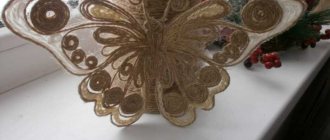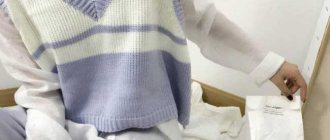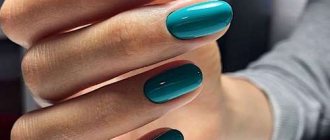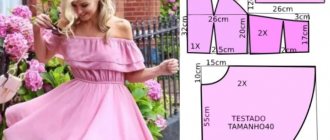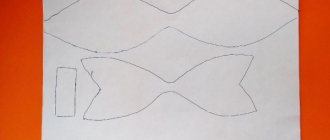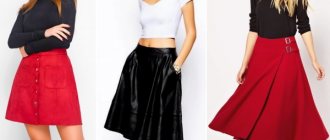Kitchen Tricks
It is not for nothing that jute is considered an environmentally friendly material. Not only due to its natural, plant origin, but also due to its appearance. The natural color of the fibers, which has warm shades, gives the product a look that corresponds in the mind to the concepts of “traditional”, “folk”, associated with comfort and peace.
An ordinary glass jar or coffee tin, tightly wrapped in jute, will become not just a decorated container for storing bulk products, but also an element of interior design.
Complete the design with a thin strip of lace, beads, flowers made from ribbons, or an ornament of cereals and grains - and beautiful and simple handmade twine crafts will decorate your kitchen shelves.
Original baskets for cookies and sweets are made from bowls or salad bowls covered with jute cord. The dishes are used only as a basis. To avoid getting stained with glue, wrap it in cling film or foil.
For this work, it is better to take PVA, because the thread, rolled into a spiral, must be glued along its entire length - this allows you to achieve the necessary strength and safety for further use.
The spiral can be formed either from twine itself or from a long chain crocheted from it. Depending on the design, it can be left untreated, with volume and unevenness, or steamed with an iron to make it flat, more elastic and even.
Among rope crafts, the ones that are perhaps the most simple and accessible are hot coasters. These can be ordinary dense spirals, made of a rope of one color or threads of several shades.
The diameter of the product depends on its purpose: large for a frying pan, smaller for a teapot, small for cups. This set looks wonderful on the table, and after use it can be folded into a neat stack, turning into an element of kitchen design.
For variety, the edges of the stand can be decorated by forming some kind of petals or gluing smaller spirals. You should not do this with hot glue - it will melt when it comes into contact with hot dishes.
For beginners, such crafts made with their own hands from jute are not only a creative start, but also an opportunity for self-expression, designing their living space in accordance with their tastes and interests. Even children who have barely mastered the basics of appliqué can cope with the simplest options.
Gaining confidence in the process of work, you can begin to implement more complex and labor-intensive plans, the technology of which requires both additional materials and the possession of various additional skills: crocheting, macrame, quilling, etc.
Principles of knitting a jute basket, tips
To create strong baskets that should hold their shape well, a thicker thread of jute is tied with twine. It's called a rope. You need to knit in a circle, tying the rope with single crochets and making increases. When the bottom of the basket is ready, there is no need to make increases. Then you just need to cut the rope, lay it again, and tie it with columns without increments, creating the first rows of the walls of the product. Oval and square-shaped baskets are most often knitted from thin twine, folded into 2-3 threads.
Tips for knitting jute baskets for beginners:
- The thicker the thread, the faster the knitting process.
- Thin threads make baskets with rigid walls, on which a beautiful, relief pattern remains.
- Since jute is much stiffer than any yarn, your hands quickly get tired from working. Beginners need to knit large items intermittently so as not to overwork the muscles of the hands and not to rub calluses on the hook.
- There are jute skeins in which the tip of the thread must be pulled out from the center. If you pull the thread from the side, the twine may begin to separate and become tangled.
Threads are sold in skeins and bobbins, in different lengths. Typically, skeins of thin threads are flat and soft, while balls of thick twine are bulkier and stronger.
Decorative animals
Designer figurines of cats, bunnies, dogs, owls and foxes, designed for interior decoration, delight handmade lovers young and old.
Their popularity among handmade crafts made from jute twine can be considered the highest. Despite the fact that they generally have no utilitarian value, they are happily made as gifts, souvenirs and competition entries. This technique is based on spiral wrapping. The body of the animal is formed from a bottle (torso) and a foam ball (head). They are covered, row by row, with thread, which does not need to be glued along its entire length. The tail and paws can be crocheted and starched for strength, or made from wire wrapped in jute.
Ears and wings are good either knitted or glued using a technology similar to making hot coasters. Eyes made from beads, buttons, coffee beans or peas are just as expressive as those bought in a specialty store (owl eyes can easily be made from threads of the same jute, tied onto a narrow ring and fluffed at the ends).
Cereals, grains, beans, dry blades of grass and spikelets, pine cones, beads, ribbons, bows and flowers (ready-made or made with your own hands from scrap materials) can be used to decorate the figurine. All these parts can be glued to the body using hot glue.
Artists who have achieved the heights of skill in working with these materials decorate products with amazing filigree elements made using other materials and techniques. Openwork details transform modest animals into fairy-tale characters, adding magical notes to the design of the room.
Preparing jute for use in needlework
Jute twine is often used in the form in which it is sold. It has a neutral color that blends seamlessly with any shades in the interior. Sometimes you still need rope of a certain color, so it is dyed or bleached. To make a rope colored, it is first bleached.
Jute bleaching
For bleaching rope, regular bleach, which is sold in household chemical stores, is suitable. It is better to use a plastic basin as a container for preparing the bleach solution.
Instructions for bleaching twine:
- Wear durable rubber gloves to protect the skin on your hands from the effects of bleach.
- Make a solution at the rate of 250 ml of white and 1 liter of water.
- Immerse the twine in the liquid until it completely covers it.
- Wait 8-10 hours, remove the rope and rinse it under running water.
Before using the twine, you need to dry it well, otherwise it will not stick together and will lose its shape. Bleached jute becomes less durable, which is not critical if it is used for external decoration of decorative elements.
How to dye twine
You can paint the rope after bleaching, so that the material absorbs the maximum amount of paint and its color becomes saturated.
Coloring methods:
- Acrylic paints or tinting paste. The dye is diluted in water to achieve the desired brightness of the liquid. The rope is impregnated with the solution, soaking it in paint for 3-4 hours. After this, allow the twine to dry completely. Paints can also be used in the usual way: paint the rope with a brush and wait until it dries.
- Dye for Easter eggs. This is a permanent paint that will allow you to get a bright rope with long-lasting pigmentation. The rope is soaked in the dye solution for several hours, then allowed to dry.
- Fabric dye. The package of coloring powder is diluted in water and heated to 70 °C. Add 1 tsp to warm water. salt, 2 tbsp. l. vinegar. The twine is immersed in the liquid for 0.5-1 hour. Afterwards, the rope is rinsed under running water and allowed to dry.
Without bleaching, jute can be painted with water-based stain. The substance gives the twine a dark brown or black tint. A rope treated with stain becomes stronger and stiffer, making it harder to work with.
Design masterpieces
Man-made design allows you to find optimal interior decoration solutions. Handmade crafts made from jute and burlap are a great help in this. These materials combine perfectly, creating a special aesthetic of simple beauty and natural charm.
Burlap, as a rule, serves as the basis for such crafts. It is stretched onto a stretcher, glued onto a sheet of thick cardboard, and given its original shape using starch.
This is how wall panels, hanging flowerpots, decorative rings, vases and other designer items are obtained. Design details are created from twine using various techniques: leaves, flowers, spirals, curls, etc.
They decorate with what is most suitable for realizing a specific idea: dried flowers, leaves, cones and ears of corn, artificial flowers, ribbons, beads, buttons, etc.
What is jute and features of the material
The production of jute rope is concentrated in Asia and Indochina. 70% of raw materials on the world market are grown and processed in Bangladesh and India. Since production plants are concentrated far from Europe and many countries, jute twine has a high price due to the cost of transportation.
Jute has a rope type of weaving; it is usually based on 2-3 strands. The type of thread connection can be twisted or braided. For needlework, pliable ropes of small or medium diameter with a twisted texture are used.
Panel
Since their composition is similar to a painting, a flat burlap base is used to create it. If you stretch it on a stretcher, then when working with jute thread you can imitate embroidery and weaving techniques.
The pattern or design in this case is created using seams, knots and loops. Here twine not only of natural color can be useful, but also dyed, colored. The picture will be completed with elements made from scrap materials that can be either sewn or glued.
A panel on a cardboard base provides great possibilities for choosing a shape, but practically eliminates embroidery. But it gives a wide choice of applicative decoration. Details can be made of jute, burlap or a combination of both. For example, flower petals made of burlap, starched and joined together, are complemented by a core made of twine spiral, tassel or pompom.
To make a pattern from jute cord, the outline drawing is placed in a transparent plastic file or covered with film. The ornament with all its curls is repeated using thread, gluing it with PVA.
If the finished, completely dried element needs to be bulged, wavy or spiral-shaped, this can be done using a curling iron or other available means of the desired shape.
You can choose a frame for the panel from wood, plastic, or you can also make it from twine, for example, by wrapping it around a cardboard blank. A jute frame is also good for thematic decoration of mirrors.
How to attach 2 strands of jute if the skein is over
The rope is too thick, so the 2 ends cannot be tied together and the knot hidden. To fasten the ends of a thick thread you need hot glue or “Moment”.
How to fasten threads:
- From both ends that need to be connected, cut off the protruding threads.
- Heat the glue in the gun.
- Apply glue to the tip of one of the ends. You will need a lot of glue, but it should not get on the sides of the rope.
- Attach the other end of the rope. Hold the tips with your fingers until the glue hardens.
Moment glue is used by analogy.
When the ends are glued together, the seam will be barely noticeable. To hide it completely, during the tying process you need to close the joint with jute thread, tying the joint with a single crochet.
Hanging decorations
These include Christmas wreaths, decorative rings and openwork balls. The latter are the easiest to manufacture. The base for them is a balloon, inflated to the required size and tied very tightly.
It is wrapped with twine, which is not only glued together at the joints, but also treated with PVA in several layers over the entire surface. After drying, the balls can be painted or left natural color.
When coated with varnish, they will have a matte shine (it will also add strength to the craft). At the end of all these manipulations, the ball can be deflated or burst, and its remains can be removed from the product. Such openwork balls can be further decorated and hung on a jute thread or burlap ribbon.
Decorative rings are hung both as panels on the wall and as a design element freely located in the space of the room. Their design can be abstract, sometimes even abstract, or correspond to the theme of a holiday.
The cardboard or wooden base is wrapped with twine or burlap tape (it is also possible to cover it with a whole cloth). Details corresponding to the design theme are made of jute, burlap or elements combining various materials. Rings are hung in the same way as balls.
Necessary materials for knitting a jute basket
The table lists the tools and materials needed for knitting jute baskets.
| Jute threads and rope | For knitting baskets |
| Scissors and stationery knife | To cut off excess threads |
| Crochet hook | You will need hooks No. 2.5-3.5 |
| Glue gun | For connecting pieces of rope and attaching decor |
| Large sewing threads with wide eye | To attach handles and large decorative elements |
| Tape measure | For measuring the height of the walls and the diameter of the bottom of baskets |
What can be used as decoration:
- satin ribbons;
- lace;
- large wooden and plastic beads;
- buttons;
- tulle;
- sackcloth.
Further in the article you can consider master classes on knitting various jute baskets.
Flowerpots
Among handmade crafts made from burlap and twine, flowerpots occupy a special place, since their practical purpose does not raise questions or doubts. When making them, you should take into account the weight of the flower pot that will be placed in it, that is, calculate the safety factor in advance or take care of safety elements.
There are a lot of options for their manufacture: pasting a plastic or ceramic base, wrapping with a rope, a chain knitted from jute, or a burlap ribbon, braiding a frame, etc.
One of the most interesting techniques is to form the body of a flowerpot from a single piece of burlap soaked in PVA (you can add other strengthening substances to the mixture, for example, gypsum or cement).
The molding base must be wrapped in film and placed upside down on a flat surface. Immerse the canvas in the prepared mixture and soak it well. Then straighten and wrap it around the base. In this case, the bottom part should be neatly aligned, and beautiful voluminous folds should form along the edges.
The product is left until completely dry, then the mold is removed from it. The resulting pots are decorated with decorative elements made from twine or improvised materials, and tinted with aerosol paints.
Characteristics and composition of jute for needlework
Jute ropes are made from plant materials. Green shoots of the jute plant are used in production. It grows in areas of high humidity, in tropical or subtropical climates.
The raw materials are prepared using a special method: soaked and dried in the open air. When properly processed, the material is characterized by high tensile strength, elasticity and softness.
Jute for handicrafts can be in the form of twine or rope
There are 2 types of rope thickness:
- rope with a diameter of up to 5 cm;
- twine 2-16 mm thick.
In needlework, polished (threads are smooth and do not prick) or ordinary ropes are used. They do not accumulate static electricity. Sometimes the material is even used for interventional insulation.
Twine for making crafts is sold in reels of 50, 100, 500 m. Its weight is determined by the marking on the label (measured according to the parameters tex/m). A value of 1000 tex corresponds to 1 kg of material per 1000 m. The natural color of the rope is pale straw or gray-brown. Some manufacturers add dyes to the raw material to obtain colored twine.
Jute creative
Products made using a technique reminiscent of quilling look extremely interesting in any interior. In this way, amazingly beautiful products are obtained that can be called jute filigree. Their appearance, indeed, resembles forged and jewelry: openwork boxes, baskets, Easter eggs, topiaries, lanterns and much more.
The imagination of the masters never ceases to amaze! They will help transform the workplace of a seamstress, teacher, accountant, designer, artist, and decorate them with original organizers, boxes, pencil cases, needle cases, and tool stands.
You can’t count all the new twine crafts that you can make with your own hands by choosing samples suitable for a specific interior, needs and skill level! Jute and burlap are materials that continue to inspire and give new ideas.
Advantages of jute in needlework over other materials
Compared to other popular materials for needlework (yarn, skeins, floss and other types of ropes), jute has many advantages.
This:
- the naturalness of the raw materials from which the ropes are made;
- easy to cut with scissors;
- you can change the shade of the twine;
- bends easily under the influence of polymer adhesives;
- keeps its shape;
- strength of jute products;
- combination with any materials and decorative elements.
Photos of jute crafts
0
Mat with glue
The simplest option. You just need to twist the jute twine into circles, ovals or fancy patterns. It all depends on your imagination! The parts are glued together with a glue gun.
But such a rug has several significant disadvantages. Firstly, this is simply a huge waste of glue. Secondly, the product is not particularly practical: it’s better not to even walk on it. The rug will look beautiful under a flower pot or as a purely decorative piece. To make it more durable, sew the parts together.
Braided rug
Such a floor mat can be made not only from jute, but also from linen or polypropylene twine. You will need a sheet of plywood with screws screwed in, so it is a little more difficult to make. We offer a lesson with step-by-step photos.
First, select the size of the future carpet you need and the distance that will be between the loops. Then mark the template onto a sheet of plywood. Our diagram will help you.
Crochet rugs
Now we'll move on to a much more interesting way to create a rug - crocheting it. Many needlewomen find this process soothing, and the thick thread makes it very simple. However, keep in mind that small debris will definitely fall off the twine. Knit or lay something on the floor to make it easier to clean up later.
Openwork
Openwork rugs can be knitted using napkin patterns, one of which we will present below. Let's figure out how to make such a cute oval rug.
It will require a lot of twine and a large hook from number six at least. First, cast on the required number of air loops, which will be in the center of the rug. Then knit according to the pattern.
In fact, you can choose almost any pattern of openwork napkins. Just make sure there are not too many holes, otherwise the rug will not be dense.
Oval
This oval rug is easy to knit and looks very cute. It will be a great decoration for a living room or even a children's room.
To begin, cast on a chain of chain stitches of the required length. How to determine it? Just subtract its width from the length of the future carpet. But keep in mind that when knitting it will still stretch a little.
Knit in the round or spiral according to the pattern shown above. Don't forget to alternate columns.
Round with popcorn pattern
An interesting and rather unusual version of a round rug. It’s not at all difficult to make, just follow the diagram.
Square
Sometimes only a square or rectangular rug fits into the interior. It's easy to knit.
In order to get such a cute carpet, you need to put a chain of air loops of suitable length on a hook. In the first row, knit all the loops with double crochets and turn the product over. In the second, single crochet into the front wall of the loop and turn over again. In the third row there are regular single crochets, and the fourth duplicates the second. In the fifth - double crochets behind the back wall. Starting with the sixth row, repeat the pattern from the second to the fifth rows until you get the desired length of the finished rug.
Color
If you don't want to decorate your room with a single-color rug, you can add some color. Surely the first option that comes to mind is to paint the twine. Of course, they do this too, but for this you will have to rewind the jute into skeins, dye it, dry it, collect it into balls again... It is much easier to take yarn of the color you like. By the way, you can also use old T-shirts instead of yarn. In the master class they knit with them.
Start by making a small loop of yarn, but do not pull it too tight.
Take twine and a hook, preferably number six, and begin tying the loop with single crochets. The knitting should be very tight.
In the second row, make a pair from each column. In further rows, randomly add two columns.
After each knitted circle, place the mat on the floor. We need to see how well it fits. Are all the loops tight enough or should they be made looser?
When you get the right size, cut the thread and be sure to hem it from the inside out.
As you can see for yourself, you can even crochet a rug from twine. Moreover, the description of these master classes is simple; even a novice needlewoman can handle it. More experienced ones can come up with schemes and patterns on their own.
